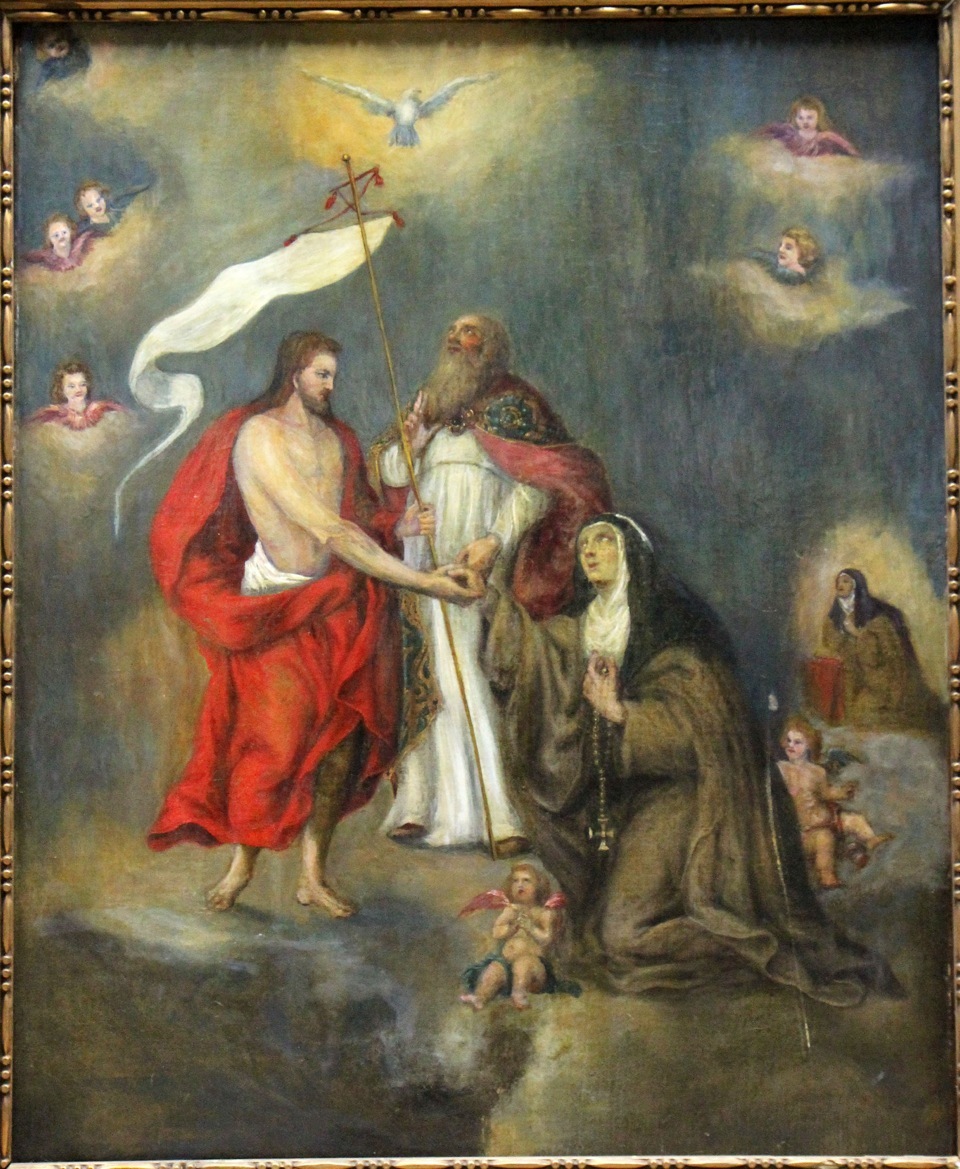Religion : St. Teresa of Avila Pleading for Souls in Purgatory

St. Teresa of Avila Pleading for Souls in Purgatory, Abraham Van Diepenbeeck, 1600/1699, image, Flanders
St. Teresa of Avila Pleading for Souls in Purgatory is a vision painting done in the seventeenth century by Flemish painter Abraham Van Diepenbeeck. The painting originates in Flanders and was most likely commissioned for a private collection rather than for a public area. There are three main figures in the foreground of the composition including St. Teresa of Avila, Christ, and a third figure who is perceived as God standing between them. St. Teresa kneels with her hand in Christs’ while God looks up at the Holy Ghost, depicted as a dove. The figures are surrounded by angels in what appears to be a heavenly realm. In the background, there is a parallel figure of St. Teresa kneeling on a prayer bench, suggesting that she is in the midst of the vision that is seen in the foreground. The vision is that of St. Teresa acting as intercessor for souls in purgatory. This piece is greatly influenced by Peter Paul Rubens’ painting of the same subject “The Holy Vision,” located in the Metropolitan Museum in New York. The oil was overpainted and has been poorly restored. X-rays were made but nothing more was discovered about the original condition of the painting. St. Teresa of Avila Pleading for Souls in Purgatory was given as a gift to the Flemming Museum in the 1950’s by Mrs. H. A. Metzger.
